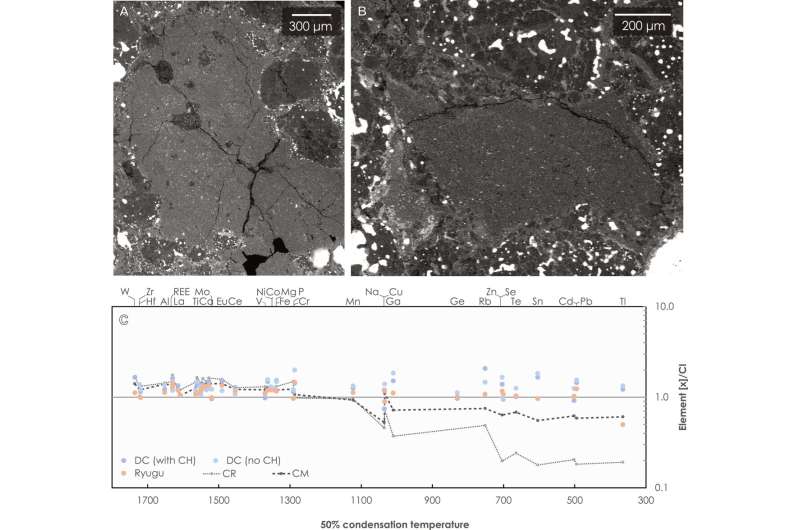June 17, 2024 report
This article has been reviewed according to Science X's editorial process and policies. Editors have highlighted the following attributes while ensuring the content's credibility:
fact-checked
peer-reviewed publication
trusted source
proofread
Study of meteorite 'Northwest Africa 14250' reveals composition of the early solar system

A multi-institutional team of planetary scientists has learned more about the early composition of the solar system by studying a meteorite named Northwest Africa 14250. In their study, published in the journal Science Advances, the group used a scanning tunneling microscope to learn more about the isotopic makeup of clasts inside the sample.
Prior research has suggested that the solar system began as nothing more than a cloud of dust. Thereafter, spinning of the cloud of material led to the formation of a disk with a center that eventually formed the sun. Outer parts of the disk eventually formed all the planets, moons, asteroids and comets.
Some of that early material, researchers believe, has remained essentially unchanged, orbiting out past the planets—that material is the Oort cloud, which is now made up mostly of chunks of ice and rock.
Such chunks, if they happen to make their way to Earth, are seen as comets. If they collide with the Earth, they are burned up in the atmosphere, making it difficult to study their makeup. But in recent years, scientists have found that sometimes, such comets collide with meteorites and materials can adhere. These meteorites, if they make their way to the Earth's surface, can be studied.
In this new effort, the research team analyzed one such meteorite named Northwest Africa 14250.
The team focused on clasts, which are clumps of materials found in meteorites that are not original meteorite material—they are foreign, and can be pieces of other meteorites or comets.
In studying the isotopic makeup of the clasts using a scanning tunneling microscope, the research team found them to be similar to clasts found in other meteorites that are known to originate beyond Neptune, and to those collected from the asteroid Ryugu.
Such findings, the team suggests, indicate that primordial material is common in the solar system and also that the protoplanetary disk was also likely quite uniform.
More information: Elishevah van Kooten et al, The nucleosynthetic fingerprint of the outermost protoplanetary disk and early Solar System dynamics, Science Advances (2024). DOI: 10.1126/sciadv.adp1613
Journal information: Science Advances
© 2024 Science X Network




















